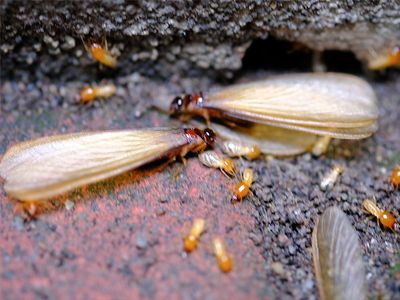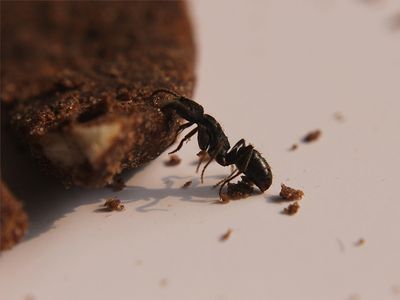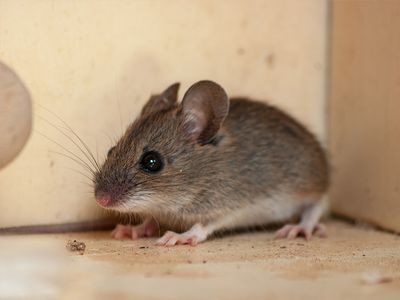What do clover mites look like?
When we're called to deal with "little red bugs," these are the insects we typically find. Clover mites are definitely little. A full-size adult clover mite is only about 1/30 of an inch in length. It is also definitely red. Their bright red coloration can easily catch your attention, even though each individual mite is strikingly small. There is no point in providing a detailed description of a clover mite as these pests are far too tiny for you to distinguish from other small, red bugs, such as chiggers or red spiders. The best way to identify clover mites is to consider where you find them and how many you find. Chiggers rarely get inside. Therefore, finding lots of tiny red bugs inside your home is far more likely to be clover mites. If you find tiny red spiders, you're likely to only find a few, and you won't find them concentrated in one spot. Finding lots of tiny red bugs grouped together is a clear indication that you're not dealing with spiders.

Are clover mites dangerous?
It is annoying to find clover mites inside your home, but we're happy to say that these mites won't bite you like chiggers will. The primary issue with clover mites is that they enter homes in large numbers, crawl on fabrics, and leave stains.
What attracts clover mites?
When working to prevent a pest problem, it helps to understand what conditions may attract these pests. Here are a few things that can bring clover mites onto your property and into your home:
- The greatest attractant for clover mites is improper fertilization. If you apply too much, you may invite these critters. You can also invite a problem by choosing a fertilizer that is high in nitrogen.
- Clover mites eat dandelions, clover, and other weeds. When weeds take over, clover mites may be close behind.
- Clover mites are attracted to sunlit areas of properties. They're found on the sides of structures that get the most sun.
- Batt insulation in a basement wall can attract clover mites as the insulation protects the bugs from cold or hot temperatures.
Keep in mind that it is possible to have a serious clover mite problem and not have any of these attractants. Some conducive conditions are subtle. Contact a licensed pest management professional for a pest control inspection to get real answers.
Why are there so many clover mites in my yard?
The simple answer is that these tiny bugs reproduce like crazy. They can create startlingly high populations and start to completely take over. Another reason is that you have some of the attractants we listed above.
Why do clover mites enter homes?
There are many reasons clover mites enter homes.
- Too cold: Clover mites are cold-blooded, but that doesn't mean they like the cold. If it gets too cold, they die. Typically, only the eggs make it through the winter. In early spring, the eggs start to hatch when temperatures rise above 45°F. In late fall, dropping temperatures can drive these pests indoors.
- Too hot: When temperatures climb above 85°F, it is enough to kill clover mites. Therefore, temperatures above 75°F will often cause these critters to seek shelter inside or force eggs into summer dormancy.
- Entry points: When clover mites hatch next to a home, they're likely to stay outside if there is no opportunity to escape unfavorable weather conditions. But a crack in a foundation, gap around a door or pipe, unprotected weep hole, or any other opening can give them access to a home.
- Plants: Clover mites feed on plants and grass, and they prefer humid environments. A home with vegetation running along the foundation walls is susceptible to a clover mite infestation.
Another factor to consider is the heat or light that leaks out of your home. If it is cold outdoors and clover mites feel heat coming out of a window or door frame, they'll migrate indoors.
How to get rid of clover mites
Clover mites are a major nuisance pest in Western Virginia, but the local pest control pros at Evergreen Pest Solutions can help with exterminate them. If you’ve noticed these tiny red bugs in or around your home, reach out today for assistance.
How can I keep clover mites out?
There are many ways to keep clover mites out of your home. The most obvious is to alter the conditions that attract them and apply weatherproofing to deter them from entering. When these steps fall short, it is time to contact a pest management professional for treatment. We use appropriate control materials and apply treatments strategically to get control of these frustrating and elusive pests. Contact your Evergreen Pest Solutions service team to get more information or to request a service visit.








